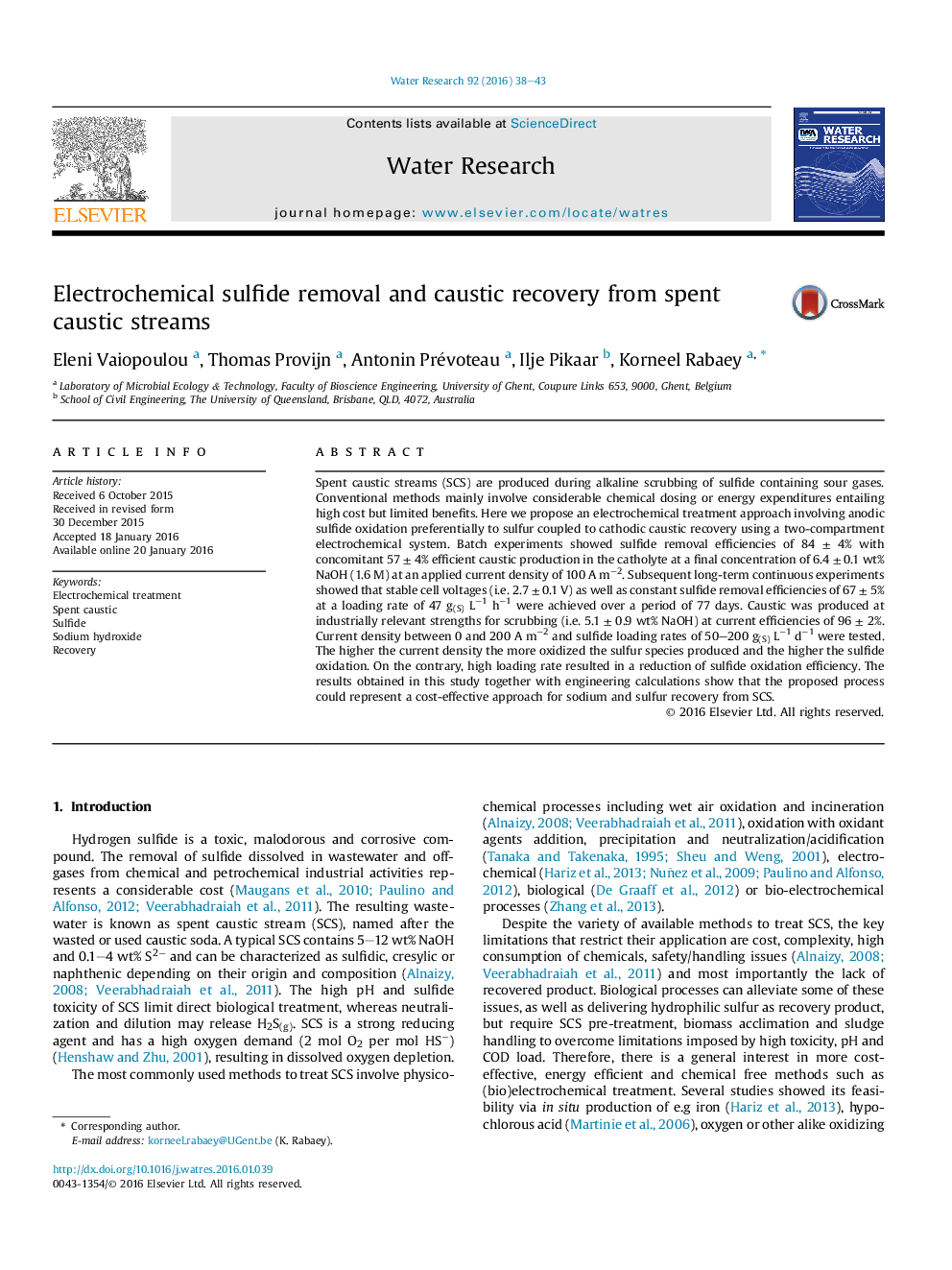| کد مقاله | کد نشریه | سال انتشار | مقاله انگلیسی | نسخه تمام متن |
|---|---|---|---|---|
| 6365241 | 1623076 | 2016 | 6 صفحه PDF | دانلود رایگان |
- Electrochemical spent caustic treatment allows economical product recovery.
- Current density and sulfide loading rate determine sulfide oxidation products.
- Sodium is recovered at high coulombic efficiencies and alleviates costs.
- Reactor materials remained unaffected during long term electrochemical operation.
Spent caustic streams (SCS) are produced during alkaline scrubbing of sulfide containing sour gases. Conventional methods mainly involve considerable chemical dosing or energy expenditures entailing high cost but limited benefits. Here we propose an electrochemical treatment approach involving anodic sulfide oxidation preferentially to sulfur coupled to cathodic caustic recovery using a two-compartment electrochemical system. Batch experiments showed sulfide removal efficiencies of 84 ± 4% with concomitant 57 ± 4% efficient caustic production in the catholyte at a final concentration of 6.4 ± 0.1 wt% NaOH (1.6 M) at an applied current density of 100 A mâ2. Subsequent long-term continuous experiments showed that stable cell voltages (i.e. 2.7 ± 0.1 V) as well as constant sulfide removal efficiencies of 67 ± 5% at a loading rate of 47 g(S) Lâ1 hâ1 were achieved over a period of 77 days. Caustic was produced at industrially relevant strengths for scrubbing (i.e. 5.1 ± 0.9 wt% NaOH) at current efficiencies of 96 ± 2%. Current density between 0 and 200 A mâ2 and sulfide loading rates of 50-200 g(S) Lâ1 dâ1 were tested. The higher the current density the more oxidized the sulfur species produced and the higher the sulfide oxidation. On the contrary, high loading rate resulted in a reduction of sulfide oxidation efficiency. The results obtained in this study together with engineering calculations show that the proposed process could represent a cost-effective approach for sodium and sulfur recovery from SCS.
107
Journal: Water Research - Volume 92, 1 April 2016, Pages 38-43
